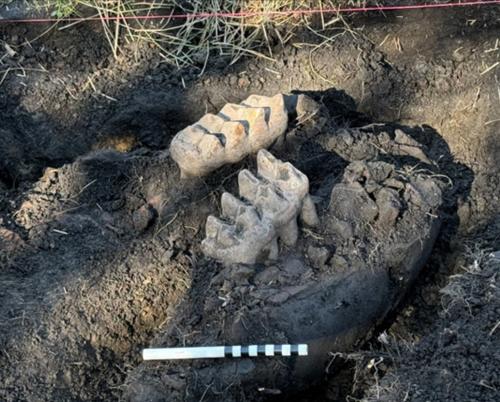Scientists closer to bringing woolly mammoth back from extinction with scientific breakthrough
Share:
Woolly mammoths went extinct around 4,000 years ago, but scientists claim America will soon see the prehistoric animal in 2028. Colossal Biosciences, a Texas-based biotechnology and genetic engineering company, is on a mission to 'de-extinct' the creature and other long-lost species.
![[Ben Lamm (pictured) told DailyMail.com that you can think of his company's de-extinction process like 'reverse Jurassic Park']](https://i.dailymail.co.uk/1s/2025/01/16/17/90408787-14292179-Ben_Lamm_pictured_told_DailyMail_com_that_you_can_think_of_his_c-a-23_1737049820525.jpg)
The company announced it has raised $200 million in a new round of funding to make it happen in the next three years. It has raised $435 million since launching in 2021. Scientists aren't exactly sure why they disappeared from the planet, but theories include a shifting climate, overhunting or a combination of both.
![[Mammoth de-extinction combines genes from ancient mammoth DNA with DNA from an Asian elephant to create hybrid stem cells which can be used to create woolly mammoth embryos]](https://i.dailymail.co.uk/1s/2025/01/16/16/90404487-14292179-Mammoth_de_extinction_combines_genes_from_ancient_mammoth_DNA_wi-a-34_1737043705630.jpg)
But Ben Lamm, CEO and founder of Colossal Biosciences, has said he's 'positive' the first woolly mammoth calves will be born in the next few years. 'Our recent successes in creating the technologies necessary for our end-to-end de-extinction toolkit have been met with enthusiasm by the investor community,' Lamm said in a statement.
![[Ben Lamm says this same technique will allow Colossal Biosciences to restore the Dodo (illustrated) and Tasmanian Tiger]](https://i.dailymail.co.uk/1s/2025/01/16/17/90404481-14292179-Ben_Lamm_says_this_same_technique_will_allow_Colossal_Bioscience-a-21_1737049820443.jpg)
'This funding will grow our team, support new technology development, expand our de-extinction species list while continuing to allow us to carry forth our mission to make extinction a thing of the past.'. Colossal, now valued at $10.2 billion, has already sequenced a mammoth genome and found a way to produce elephant stem cells capable of giving rise to several different cell types — two important steps toward resurrecting the mammoth.
![[Lamm said his eventual goal is to reintroduce self-sustaining, interbreeding populations of mammoths into the wild]](https://i.dailymail.co.uk/1s/2025/01/16/16/90404463-14292179-Lamm_said_his_eventual_goal_is_to_reintroduce_self_sustaining_in-a-38_1737043705777.jpg)






















